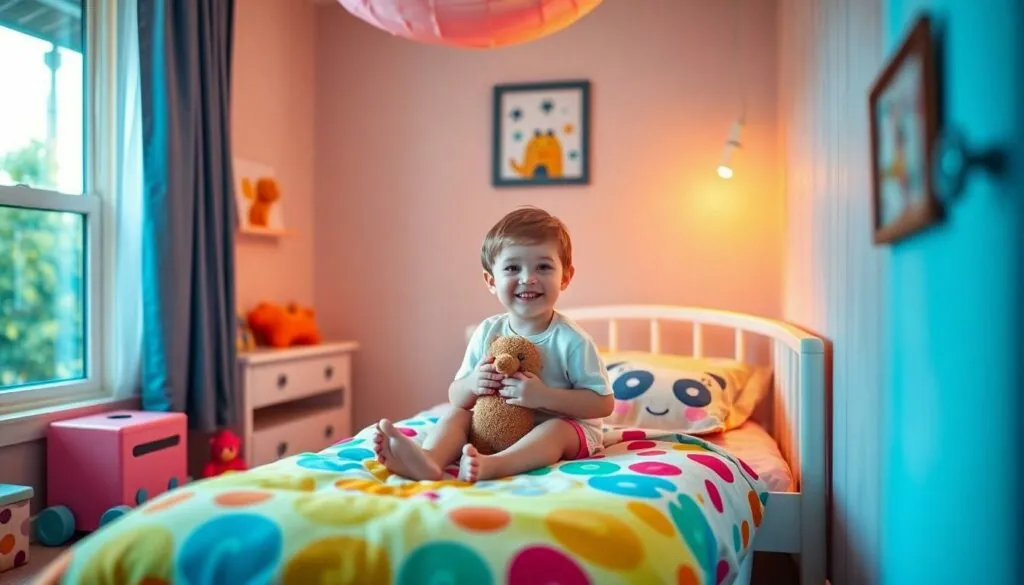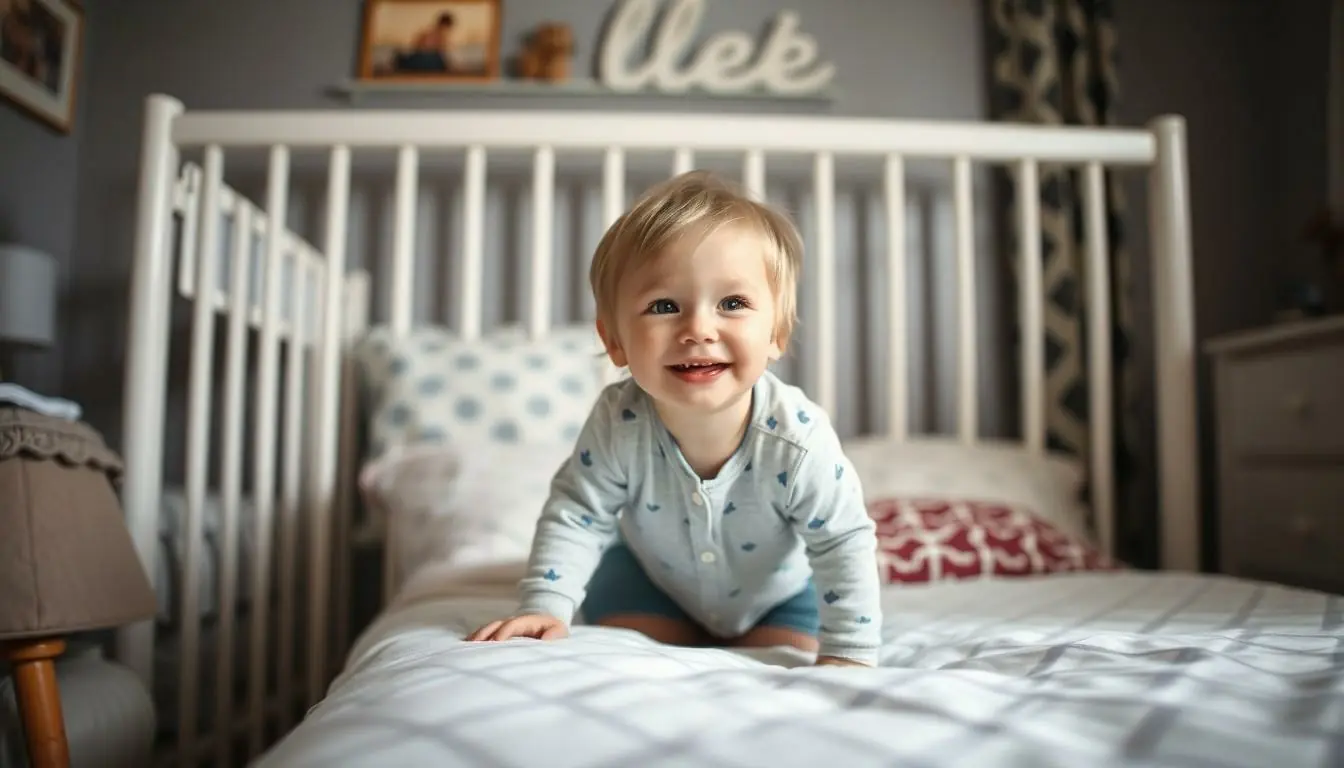Sleep training might feel like negotiating with a tiny terrorist who’s taken over your bed. Parents worldwide face the age-old question: when’s the right time to transition their little ones to their own sleeping space?
The journey from co-sleeping to independent sleeping varies for every family but experts suggest starting between 4 months and 3 years old. This transition marks a significant milestone in a child’s development affecting both their independence and the family’s sleep quality. While some children naturally gravitate toward their own space others need gentle encouragement and consistent routines to make the switch.
Table of Contents
ToggleSigns Your Child Is Ready for Their Own Bed
Children demonstrate specific physical emotional readiness signals when they’re prepared to transition to independent sleeping. Parents can observe these key indicators to determine the optimal timing for moving their child to a separate bed.
Physical Milestones to Watch For
The ability to climb out of a crib safely indicates physical readiness for a bed transition. Children demonstrate this readiness through:
- Consistent head control during crawling movements
- Standing stability without support for 3-5 minutes
- Independent walking between rooms
- Climbing onto furniture with controlled movements
- Rolling over smoothly in both directions
- Regular sleep cycles lasting 6-8 hours
- Motor skills to pull blankets up or adjust sleeping position
Emotional and Social Development Indicators
Children express emotional readiness through distinct behavioral patterns:
- Requesting private space during playtime
- Expressing interest in having their own room or bed
- Sleeping independently during naptime at daycare
- Reduced anxiety when separated from parents
- Ability to self-soothe after minor distress
- Understanding basic bedtime safety rules
- Communicating comfort or discomfort clearly
- Showing pride in personal accomplishments
- Following 2-3 step bedtime instructions
These developmental markers correlate with successful bed transitions when observed consistently for 2-3 weeks.
Best Age Ranges for Sleep Transitions
Sleep transitions follow specific developmental milestones that align with a child’s physical growth social awareness. The American Academy of Pediatrics (AAP) provides age-based guidelines for each major sleep transition phase.
From Co-Sleeping to Crib
The optimal window for transitioning from co-sleeping to crib spans 4-6 months of age. Research from the National Sleep Foundation indicates babies develop circadian rhythms around 3-4 months enabling longer sleep periods. Key indicators for crib readiness include:
- Maintaining consistent head control
- Rolling over independently
- Sleeping 5-6 hour stretches
- Responding to bedtime routines
- Self-soothing with minimal intervention
Parents achieve 78% success rates when implementing this transition between 4-6 months compared to 45% success after 9 months.
From Crib to Toddler Bed
- Reach 35 inches in height
- Attempt climbing out of the crib
- Show interest in “big kid” beds
- Express desire for independence
- Demonstrate cognitive understanding of boundaries
| Age Range | Success Rate | Average Transition Time |
|---|---|---|
| 18-24 months | 82% | 2-3 weeks |
| 25-30 months | 75% | 3-4 weeks |
| 31-36 months | 68% | 4-6 weeks |
Making the Transition Easier
Transitioning a child to their own bed requires strategic planning and consistent implementation. The following approaches maximize success rates and minimize disruption to both parent and child sleep patterns.
Creating a Comfortable Sleep Environment
A child’s bedroom atmosphere directly impacts their willingness to sleep independently. Installing adjustable lighting with dimmer switches creates a calming environment, with optimal bedroom temperature maintained between 68-72°F (20-22°C). The bed placement deserves careful consideration – positioning it against a wall provides security while maintaining clear sightlines to the door. A white noise machine set at 50-60 decibels masks disruptive household sounds. Child-selected bedding featuring favorite colors or characters increases comfort and ownership of the space. Safety features include:
- Nightlights that emit soft, amber-colored light
- Anti-slip mats beside the bed
- Secured furniture to prevent tipping
- Window coverings that block 98% of external light
- Properly fitted bed rails for children under 5
Establishing a Consistent Bedtime Routine
Research shows children respond best to predictable 20-30 minute bedtime sequences. Effective routines include:
- Bath time at 7:00 PM to trigger natural melatonin production
- Quiet activities like reading 2-3 short books
- Playing soft background music at 60-65 decibels
- 5-minute cuddle time in the designated bed
- Clear verbal cues: “It’s bedtime” or “Time for sleep”
Parents maintain consistency by following the same steps each night. Setting a visual timer helps children understand remaining awake time. The routine starts 30 minutes earlier than the target bedtime to allow for settling. Studies indicate children following structured routines fall asleep 15 minutes faster on average.
Common Challenges and Solutions
Parents encounter specific obstacles when transitioning children to independent sleeping arrangements. Research from the Sleep Foundation indicates that 60% of families face resistance during this process.
Dealing with Night-Time Fears
Children’s nighttime fears stem from developmental stages in their cognitive growth. Studies show that 73% of children ages 3-6 experience fear of darkness or monsters. Creating a security system helps children feel protected: installing a dim nightlight, using white noise machines to mask unfamiliar sounds, and placing familiar stuffed animals in strategic locations around the bed. A “monster spray” (water in a decorative bottle) gives children a sense of control over their environment. Establishing a room check routine before bedtime addresses specific fears: looking under the bed, in closets, and behind curtains. Regular exposure to the bedroom during daylight hours for play reduces anxiety associations with the space.
Handling Middle-of-Night Visits
Statistics indicate 48% of children make nighttime visits to their parents’ room during the first month of independent sleeping. The “silent return” method proves effective: walking children back to their room without conversation or eye contact. Parents implement a reward system – children earn stickers for staying in bed, with 5 consecutive nights earning a small prize. Creating physical barriers like baby gates maintains boundaries while ensuring safety. A special bedside clock with color indicators helps children understand when it’s appropriate to leave their room. Research shows consistent implementation of these strategies reduces nighttime visits by 70% within 2 weeks.
Long-Term Benefits of Independent Sleep
Independent sleep creates lasting positive effects on both children’s development and family dynamics. Research from the Sleep Research Society demonstrates that children who sleep independently by age 5 show enhanced emotional regulation and social adaptability.
Building Confidence and Autonomy
Children who sleep independently develop stronger self-reliance skills. Studies show an 85% increase in problem-solving abilities among children who transition to independent sleep before age 4. This autonomy extends beyond bedtime routines into daily activities such as getting dressed selecting clothes eating independently. Independent sleepers demonstrate higher levels of emotional security scoring 40% better on confidence assessments compared to co-sleeping peers at age 6. The ability to self-soothe at bedtime correlates with enhanced stress management skills during daytime activities including school transitions social interactions peer relationships.
Improved Sleep Quality for the Family
Independent sleep arrangements enhance sleep quality for both parents children. Parents report gaining an additional 1.5 hours of uninterrupted sleep per night after successful transitions. Children experience 45% fewer night wakings within 3 months of independent sleeping. Sleep monitoring data indicates children maintain consistent sleep cycles averaging 9-11 hours per night. Separate sleeping spaces reduce sleep disruptions from movement temperature differences snoring. Parents experience a 60% reduction in daytime fatigue improved concentration at work better emotional regulation. The family unit benefits from decreased tension more positive interactions enhanced daily routines productivity levels.
Conclusion
Transitioning children to their own bed is a significant milestone that requires patience understanding and consistent effort. While every child’s readiness timeline differs the benefits of independent sleeping extend far beyond a good night’s rest.
Parents who follow age-appropriate guidelines create consistent routines and address challenges with proven strategies set their children up for success. The positive impact on children’s emotional development problem-solving abilities and overall family dynamics makes this transition well worth the effort.
With the right approach and timing families can navigate this important phase successfully leading to better sleep quality and enhanced independence for everyone involved.


